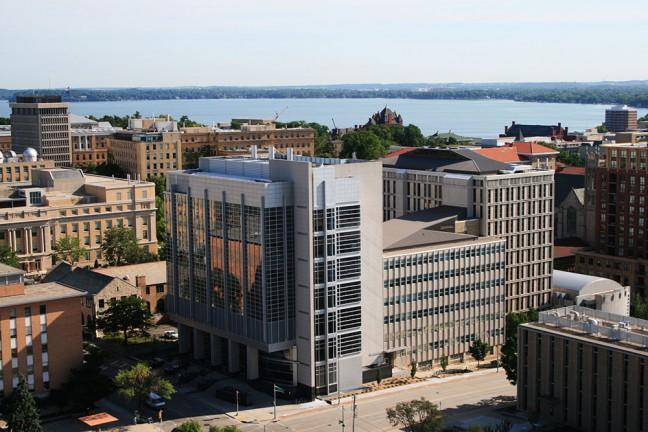The Madison metro area ranked first in the nation for having the highest percentage of graduates in STEM fields.
Through a study completed by Brookings Institution, the metropolitan area of the City of Madison leads the nation in science, technology, engineering and mathematics college graduates.
The study showed Madison’s STEM graduates per person aged 20-24 at 2.5 percent, significantly higher than the U.S. average at 0.7 percent.
Meredith McGlone, University of Wisconsin spokesperson, said these numbers were a spin-off effect of having top-ranked UW in the metropolitan area. The partnership between STEM research and industry invite new discoveries in the fields, she said. With a high number of STEM college graduates in Madison, innovation will continue, McGlone said.
The study showed that 26 percent of total graduates in the Madison area got a degree in a STEM field. This is higher than the world leader, Finland, where the STEM graduates are 22 percent of the total number of graduates.
Mitchell Nathan, UW professor of educational psychology, said he thought having STEM interconnected in one category has helped interest grow in the various fields. Instead of having many fields to sift through individually, STEM helps bring interest to a younger generation, he said.
“I think STEM has helped to bring in young people who are curious, who are talented and who want to make a difference in society,” Nathan said. “It gives them a fat target to go after and then they can find within STEM what they want to pursue.”
The effects of having strong STEM field programs translates well in Wisconsin during graduates’ post-college careers, McGlone said. If students come to Madison in pursuit of a degree in a STEM field, McGlone said it is in the interest of Wisconsin to hire graduates for jobs and to help them keep innovating.
Through STEM fields, Nathan said the study targets the idea of advanced industry. In these fields, he said graduates are able to become innovators, rather than following innovations.
Julie Mitchell, UW professor of biochemistry and mathematics, said while the focus on STEM fields is important, taking a variety of classes is useful for a career after college. An art history minor herself, Mitchell said the perspective other classes give is important and said she did not want UW to be turned purely into a STEM-based school.
“Would you want an architect who never took an art class, or would you want a marketing person who didn’t understand anything about history or culture?” Mitchell said. “People get a full education here beyond the technical skills that are directly relevant to their job and leave here as well-educated citizens.”
Mitchell said the high number of graduates can be partially explained by the overall strength of UW’s programs. While UW is often thought of as a bioscience campus, it also has strong departments in chemistry, physics, geology and so forth, she said. Through these programs, Mitchell said students can gain a lot from UW.
This article previously mistitled the profession of Prof. Nathan. The Badger Herald regrets this error.


